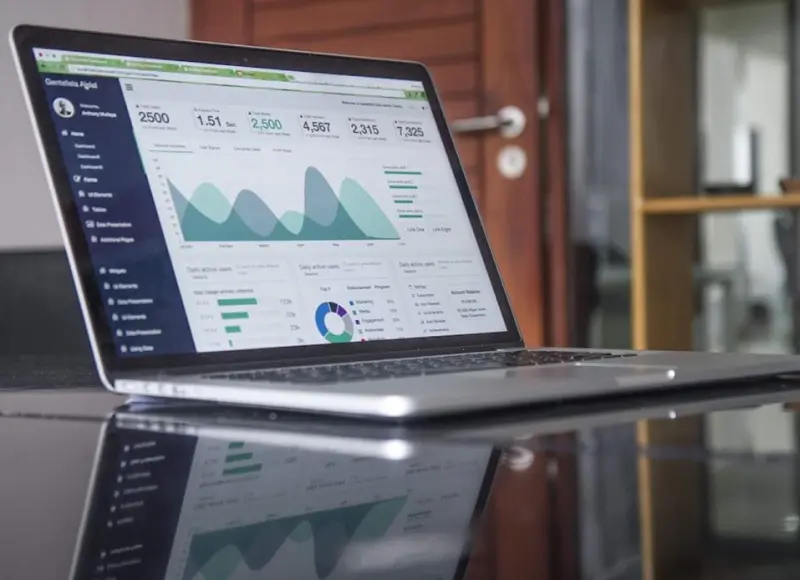Table of Contents
Elevate your SEO game with a strategic content marketing plan. Uncover the secrets to increasing your website's search engine rankings and reaching a wider audience.

Online marketing is always changing in this modern digital century, but one thing never changes: SEO is always an important part of increasing website traffic. The foundation of SEO is content, even though technical components like sitemaps and meta tags are important.
This leads us to the dynamic combination of SEO and content marketing, which, when done well, may greatly increase your online presence and audience engagement.
Building meaningful connections with your audience, giving them something valuable, and ensuring your content is search engine readable are the key elements of strategic content marketing. It's an effective strategy that could make your SEO efforts outstanding. Combining SEO concepts with content marketing is necessary for success in the digital world, regardless of whether you want to improve your present approach or start from scratch.
In this blog, we'll examine how to maximize the power of your content. This will help you improve your SEO and eventually increase traffic and engagement on your digital channels.
Combining High-Quality Content with link-building
Link building is still an important factor for effective SEO. However, getting quality connections from reliable sites is equally important as getting as many links as possible. In this procedure, the highest-calibre content is essential. Intelligent and helpful content increases the likelihood of organic links from other websites.
To help with this, emphasize your content's depth and worth. Provide in-depth instructions, professional analysis, and practical advice that meets your audience's needs. Additionally, interact with other content producers to encourage linking and sharing, increasing your work's exposure and authority.
Optimizing Keywords: Not Just Stuffing
The days of stuffed keywords being useful are long gone. A deliberate approach to keyword use is required for modern SEO. To find out what your audience is searching for, conduct in-depth keyword research first. Then, easily include those keywords in your content. The organic occurrence of keywords in the text, titles, and meta descriptions improves readability and relevancy without breaking the narrative. Relevance and reader engagement are the main priorities, not merely ranking high. Consider long-tail keywords as well, as they have less competition and can attract more targeted visitors.
Using Multimedia to Increase SEO and Engagement
Incorporating multimedia features into your material, such as photos, videos, and infographics, enhances its readability and search engine optimization, with AI tools like Flux.1 AI helping generate high-quality visuals. These components may lengthen visitors' stays on your website and lower bounce rates, which are two things that search engines value. Ensure that movies have appropriate tags and descriptions and that photos are optimized with alt text whenever you use multimedia. This helps with accessibility for all users as well as SEO. Multimedia may also improve the user experience by making difficult material easier to understand and visually appealing.
Producing Detailed Content to Rule Topic Clusters
Using a primary "pillar" page as a connection between related articles, topic clusters are a way to arrange a website's content. By showcasing your expertise in the industry, this structure facilitates search engines' ability to quickly scan and classify all of the information about a certain subject, improving SEO. To put this into practice, decide which essential subjects are pertinent to your company and develop pillar pages that give a thorough synopsis of each subject. Next, create supplementary content pieces exploring particular facets of the subject matter, ensuring that all pertinent articles are connected to the primary pillar page. In addition to helping with SEO, this integrated content approach offers a more engaging experience for consumers looking for in-depth information.
Regular Updates and Refreshes to Maintain Relevance
The demands and interests of internet users are always changing, much like the world of technology. Search engines will reward you for updating your content frequently since it remains up-to-date and helpful. Your material remains authoritative and fresh by going back and updating previous postings with new data and insights. In addition to improving user experience, this procedure promotes return visits, which can inform search engines that your website is a useful resource. Additionally, upgrading your content can protect your long-term investment in content development by maintaining or improving its search ranks.
Analyzing Data to Improve Content Strategy
Data is an efficient tool for content strategy optimization. Analytics provide information on how people engage with your content and what works and what doesn't. Metrics like page views, average time on page, and bounce rates may be tracked by tools like Google Analytics, which can provide insights into how well certain content pieces perform. By analyzing this data, you can enhance your strategy and concentrate more on what functions well. For example, investing in additional video content may be worthwhile if visitors to your site stay engaged longer when watching videos. You may improve the efficiency of your content marketing and its influence on SEO by continuously evaluating and making adjustments based on data.
Improving Usability to Lower Bounce Rates
User experience is an essential part of SEO (UX). Websites with strong user experiences—such as quick load speeds, mobile friendliness, and intuitive navigation—are given preference by search engines. Because users are more likely to stay on a website that is easy to use and informative for longer periods and explore more pages, improving UX can considerably lower bounce rates. Ensure your website is responsive to function and look great across all devices. Use obvious and obvious calls to action (CTAs) and logically arrange your material to help people explore your website. Not only can an easy-to-use interface aid in search engine optimization, but it also establishes confidence and trust with your target audience.
Integration of Social Media
Social media integration can boost the visibility of your content and increase visitors to your website, even if social media signals have no direct impact on SEO results. Social media sites are excellent resources for content promotion and audience interaction. Good social media tactics include posting material often and interacting with followers via posts and comments. Backlinks can also result from social sharing since more people will find your content on these networks. By attracting more people to your website, producing shareable content—like infographics or intriguing articles—can raise the exposure of your content and improve SEO inadvertently.
Final Thoughts: Assessing Achievement and Reiterating
Assessing the success of your content marketing plan is essential to understanding how it affects your SEO objectives. At the beginning of your campaign, establish specific performance criteria that you will track, such as more visitors, better search engine rankings, or higher engagement rates. You may refine and enhance your approach by routinely reviewing these results. Keep in mind that SEO is an ongoing process that greatly benefits from a dynamic and adaptable content strategy rather than a one-time effort. You can make sure that your efforts not only satisfy current standards but also position you for future success by keeping up with SEO developments and consistently coordinating your content marketing with these best practices.









